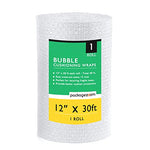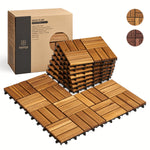You have no items in your shopping cart.
Hand sanitizer has become an essential item in our daily lives, especially during times when maintaining proper hygiene is crucial. However, many people wonder if hand sanitizers can leave stains on their clothes or surfaces. In this comprehensive guide, we will explore the topic of whether hand sanitizer stains and provide valuable insights based on real experiences and credible sources. We will cover everything you need to know, from the science behind hand sanitizers to tips for preventing potential stains.
Does Hand Sanitizer Stain?
Hand sanitizer is typically made up of alcohol, which is known for its effective germ-killing properties. When applied, the alcohol in hand sanitizers evaporates quickly, leaving your hands clean and germ-free. But does hand sanitizer leave stains? The answer to this question depends on various factors, which we will explore in detail below.
The Science Behind Hand Sanitizers
To understand whether hand sanitizers can stain, it's essential to know how they work. Most hand sanitizers contain isopropyl alcohol or ethanol as their active ingredient. These alcohols work by denaturing the proteins in bacteria and viruses, effectively killing them on contact. When you apply hand sanitizer to your hands, it starts to evaporate rapidly, leaving no residue behind in ideal circumstances.
Factors That Influence Staining
While hand sanitizers are designed to evaporate completely, certain factors can influence whether they leave stains. Let's explore these factors:
1. Ingredients in Hand Sanitizer
Some hand sanitizers may contain additional ingredients such as colorants or fragrances. These additives can increase the chances of leaving stains, especially if they don't evaporate as quickly as the alcohol. When choosing a hand sanitizer, opt for clear, fragrance-free options to minimize the risk of staining.
2. Surface Material
The type of surface or fabric you apply hand sanitizer to can impact whether it leaves a stain. Porous materials like wood or certain fabrics might absorb the alcohol or other ingredients, potentially leading to discoloration.
3. Dye Transfer
Hand sanitizers that contain colorants may cause dye transfer when applied to certain surfaces, such as clothing or upholstery. This can happen if the colorants are not completely dissolved or if the surface is prone to absorbing liquids.
4. Residue from Previous Substances
If there is already a substance or residue present on the surface, it can interact with the hand sanitizer and potentially cause staining. For example, if there is grease or oil on your hands or surfaces, it may mix with the hand sanitizer and create a stain.
Testing Hand Sanitizer on Different Surfaces
If you're concerned about hand sanitizer staining specific surfaces or fabrics, it's a good idea to conduct a small test in an inconspicuous area. Here's how you can do it:
- Choose an inconspicuous spot on the surface or fabric.
- Apply a small amount of hand sanitizer and let it evaporate.
- Check for any signs of staining or discoloration after the area has dried.
How to Prevent Hand Sanitizer Stains
While the risk of hand sanitizer stains is relatively low, you can take some precautions to minimize the chances further. Consider the following tips:
1. Opt for Clear and Fragrance-Free Hand Sanitizers
Choose hand sanitizers that are clear and do not contain any added fragrances or colorants. These are less likely to cause stains, especially on fabrics and delicate surfaces.
2. Avoid Overapplication
Using more hand sanitizer than necessary won't provide any additional benefits and may increase the likelihood of staining. Apply a small amount and rub it thoroughly on your hands to ensure complete coverage.
3. Choose the Right Surface
If you're in a situation where you need to apply hand sanitizer on a surface, opt for non-porous materials like glass or metal, as they are less likely to absorb any liquid and cause staining.
4. Check for Residue
Before applying hand sanitizer, check your hands or the surface for any visible residue or substances. Clean the area if necessary before using the hand sanitizer.
5. Immediate Washing
If you accidentally spill hand sanitizer on a surface prone to staining, clean it immediately with water and a gentle detergent. This can help prevent any potential damage.
FAQs About Hand Sanitizer Stains
Let's address some frequently asked questions related to hand sanitizer stains:
Q: Can hand sanitizer stain my clothes?
Hand sanitizers are designed to evaporate without leaving any residue. However, certain types of hand sanitizers with added colorants may cause staining on certain fabrics. It's best to use clear and fragrance-free hand sanitizers to minimize this risk.
Q: Can hand sanitizer stain wood surfaces?
Wood surfaces can be porous, which means they might absorb the alcohol or colorants present in some hand sanitizers. To prevent staining, avoid using hand sanitizer directly on wood and opt for other disinfection methods.
Q: Does hand sanitizer leave stains on glass?
Glass surfaces are non-porous, so hand sanitizer is unlikely to cause staining. However, if the glass has dirt or other substances, the hand sanitizer could interact with them and potentially leave stains.
Q: How do I remove hand sanitizer stains from clothes?
If your clothes get stained by hand sanitizer, act quickly. Rinse the affected area with cold water and apply a small amount of laundry detergent before washing it as usual.
Q: Is there a hand sanitizer that guarantees no staining?
No hand sanitizer can guarantee zero staining, but clear and fragrance-free options with minimal additives are less likely to cause stains.
Q: Can hand sanitizer leave stains on electronics?
It's best to avoid applying hand sanitizer directly to electronic devices, as the alcohol might damage the sensitive components. Instead, use a disinfectant wipe that is safe for electronics.
Hand sanitizer is an effective tool for maintaining proper hand hygiene, especially in situations where soap and water are not readily available. While hand sanitizers are generally designed to evaporate without leaving stains, it's essential to consider certain factors that can influence staining. By choosing the right hand sanitizer, being mindful of the surfaces you apply it to, and taking prompt action in case of spills, you can enjoy the benefits of hand sanitizers without worrying about stains.
Remember, prevention is key, and using clear and fragrance-free hand sanitizers is your best bet to avoid any unwanted surprises. So, keep those hands clean and sanitized, and stay stain-free!








